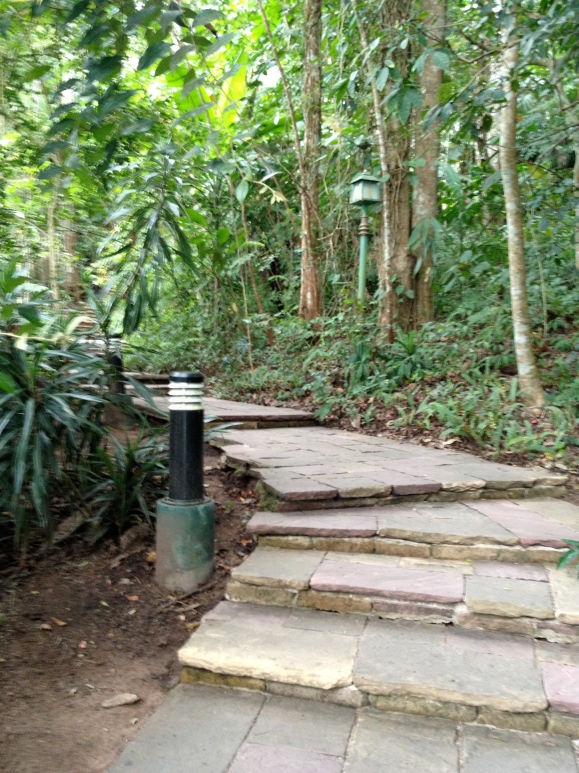I rarely eat dinner out, and even more rarely do I eat at “fine dining” establishments when I’m at home in Melbourne. This is due to a number of factors, including a husband who works evening shifts. But mostly, it’s because I don’t feel I get good value. I come away thinking I could do better at home for a fraction of the price. Or, I feel the food is too fussy, too rich, too laden with oil and sauces.
I’m not talking about your cheap and cheerful eatery that provides tasty and filling food for a few dollars and to which you go for a quick meal, not a big night out. Melbourne has a plethora of these wonderful establishments, as food blogs such as Consider the Sauce show.
I’m talking about a full-on restaurant at which you sit for two or three or more hours as a social occasion. For a two- or three-course dinner for two with wine in Australia, where wages are some of the highest in the world, I would expect to pay $Au 150-300*. And usually, at the end of the night, I would arrive home thinking, “It wasn’t worth that”.
So how is it that, on my recent trip to Thailand, I was happy with a bill of 24,000 baht (about $750) for dinner for two at the Lebua Hotel’s Sirocco Restaurant at the Dome on the 63rd floor of the State Tower building? Well, just check out the view, for a start (CLICK on the image to get the full view and caption):

The spectacular view from the Sirocco restaurant and its Sky Bar. Image courtesy of Lebua Hotels and Resorts
They claim to be the highest rooftop restaurant in the world.
A colleague said to me the other day “I would never pay that much for dinner, no matter how good it was—in fact, it couldn’t be that good”. I want to address here some obvious reasons against paying this much for one dinner:
- Yes, of course the money would be better given to charity. But I work hard, pay my taxes at home, recycle goods and redistribute excess wealth.
- This is just another example of western capitalist decadence. Well, decadence, anyway, since there were plenty of Thais and other non-westerners there. Yes, agreed, but it provides work for a lot of people, including live musicians. I think it’s only decadence if you do it all the time.
- You should never pay this much for dinner on principle. I know, and I agree, most of the time…
But not this time. I can say without a doubt that $750 for dinner for two at Sirocco was worth it. At the end of the night, I knew it would be a location I would remember forever.
The photographs don’t do it justice: the open-air restaurant on the 63rd floor has panoramic views of the enormous city of Bangkok, which extends in every direction as far as the eye can see. I have spent years of my life in this city, but never have I viewed it this way. It’s truly breathtaking and one of the most impressive sights I’ve ever been confronted with. In keeping with the theme of this blog, sitting at a table on the 63rd floor, I rediscovered a city I thought I knew well, because this view gave me a completely different angle on it.
We started with a dozen Tasmanian Pacific oysters au naturel and dips at a hefty 2480 baht ($75). This is probably at least twice as much as I’d pay in Australia for the same, and the irony that I was eating these Australian oysters in Thailand did not escape me. However, I can say that these particular oysters were the best I have ever eaten. How can that be? I don’t know. Perhaps it was something in the air over Bangkok that night.
We opted then for the six-course chef’s tasting menu, which at 4500 baht a person ($140) was reasonably priced for what it was. Although it was nouvelle cuisine, it wasn’t overly fussy, tiny or otherwise ridiculous. The fusion of Japanese and Mediterranean influences worked seamlessly. So, simplified slightly from the menu, this is what we had, each course delectable and each served by impeccably trained staff who were attentive without being fussy or over-bearing:
Cured salmon cannelloni, sesame, lemon gel
Alaskan diver scallop with squid ink sauce and ossetra caviar
Porcini risotto
Chilean seabass with white miso, seaweed, and candied walnuts
Wagyu beef sirloin with porto sauce and confit of pork belly
Mint brulee, chocolate crumble and sorbet, meringue
The food was 11,480 baht ($380), the drinks 8590 baht ($268), leaving 3930 baht ($123) for service charges and VAT.
So, let’s say we would have to spend an average of $200 for two people for dinner at a fine dining restaurant in Melbourne— more for a degustation menu. Typically, this might be somewhere with no view, good food but indifferent service. Was Sirocco four times better than that? Yes it was. Thus, it was worth it and I rest my case.
* All $ values are in Australian dollars.















